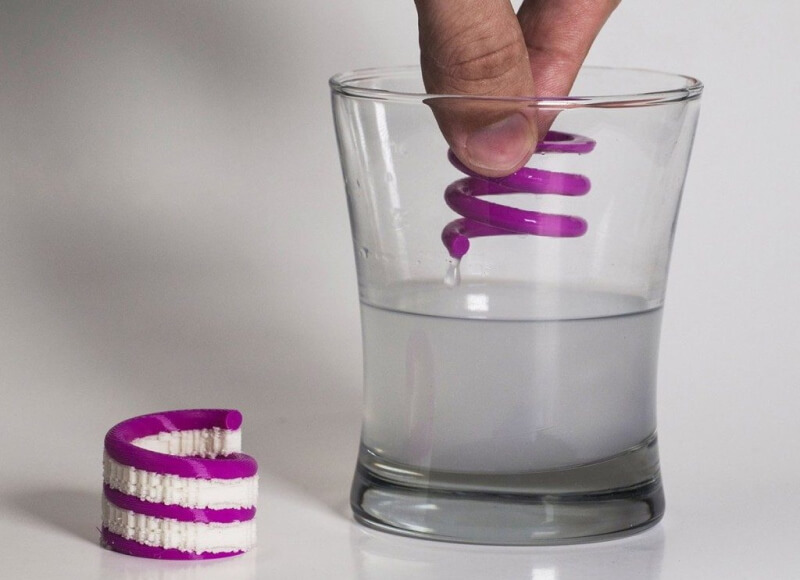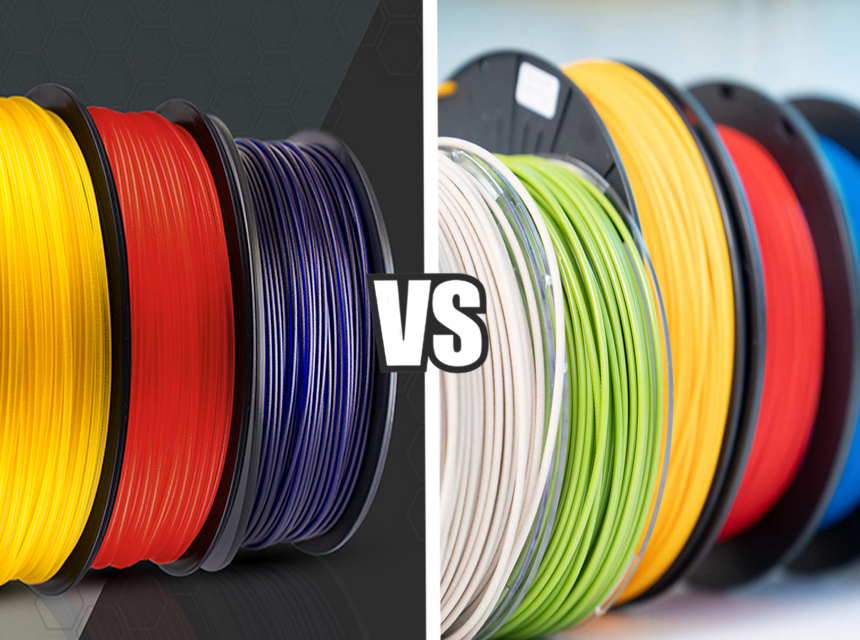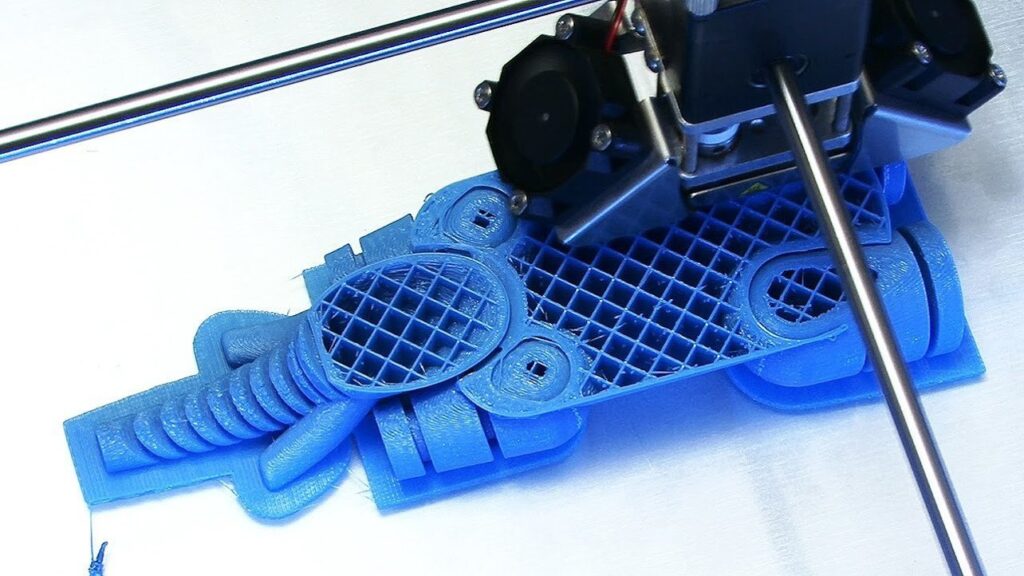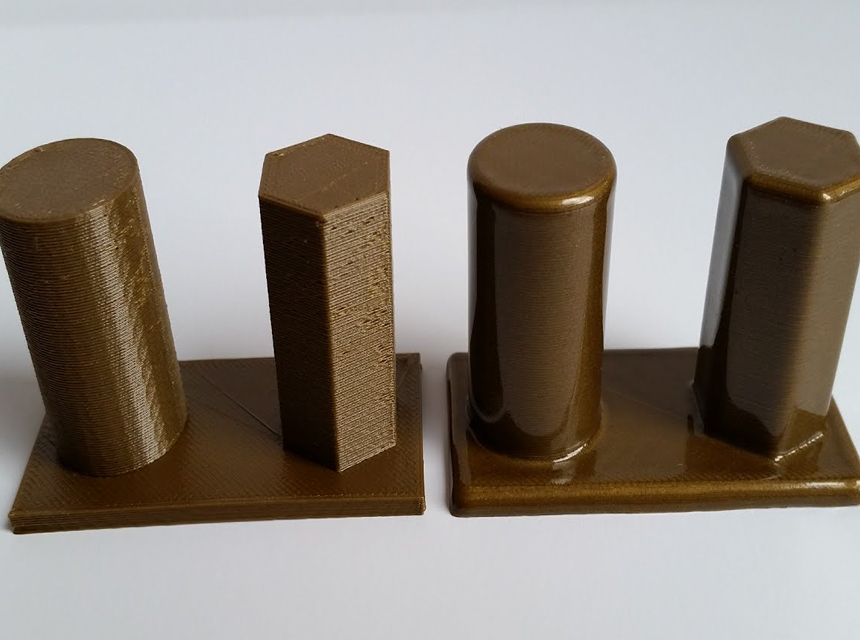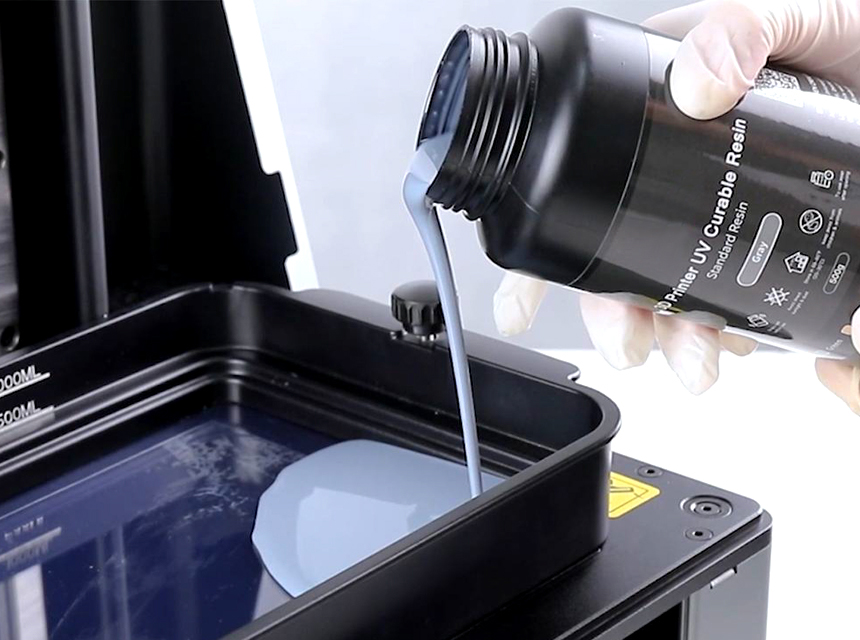

There’s no doubt that 3D printing has become quite popular now thanks to its cost-effectiveness and flexibility. However, this printing process involves the melting of plastic that becomes exposed to the air. The exposure of melted filaments during 3D printing could cause dizziness, nausea, irritation and other unpleasant reactions.
So whether you’re printing at the office, at home or in a lab, the release of these fumes is quite inevitable and may be a problem for yourself and those within the vicinity. This is often a worry for users and questions the safety of humans due to these emissions.
While some are ignorant of the health risks that come with 3D printing, others simply have no clue about how to deal with these fumes. In this article, we’ll shed more light on 3D printer fumes and how you can effectively manage these toxic releases.
There are basically two types of 3D printers which includes Fused Deposition Modeling (FDM) and Resin 3D printers. FDM 3D printers typically use filaments which involve the melting of plastics while Resins use liquid resins. The printing process of both 3D printers often leads to the emission of toxic particles that are harmful to human health.
This also poses a threat to the future of 3D printing. One thing to note is these printers produce different kinds of emissions during the printing process. FDM 3D printers emit ultrafine particles while Resin 3D printers volatile organic compounds. So regardless of the 3D printer type you choose, you’re going to experience harmful 3D fumes emitting from them.
Generally, the melting of filaments leads to the emission of ultrafine particles or even nanoparticles which are usually quite small, and invisible. 3D printing with FDM printers naturally requires the use of filaments that invariably produce these toxic particles.
Ultrafine particles are so small that they are impossible to see which makes them even more hazardous to human health. These particles are able to pass through your nostrils and stick to your lungs. The toxicity and nanosize of ultrafine particles make it easy for them to enter your body by passing through your lungs.
This not only makes them easily inhalable but can also absorb delicate organs in your body. Ultrafine particles can pass through your lungs up to your brain, which could cause cerebral and motor dysfunction. The exposure of these toxic chemicals for several hours also induces cough, lung inflammation, headache and cardiovascular diseases.
This unseen hazard is one you wouldn’t want anywhere near your friends or loved ones, especially those with an existing medical condition. So if you have a friend, family member or colleague around with asthma, this air pollution could worsen their condition.
Also according to various scientific research, there’s a strong correlation between the inhalation of Ultrafine particles and cancer. One thing is certain, UFPs are far from being beneficial to human health. The results of an extended period of exposure could cause severe heart problems, lung diseases and heart failure.
Resin 3D Printers naturally emit volatile Organic compounds due to the resin liquid used while printing. These toxic products are a mixture of chemicals with high vapor. Resin printers emit three types of VOCs when printing which depend on the filament used when printing.
Printing with nylon and PETG filaments produces caprolactam, an organic compound that often induces irritation of the eyes and throat, skin irritation and headaches.
The release of Volatile organic compounds in the air does not normally produce a foul or unpleasant smell. A good example is the scent of fresh paint or melted ABS.
While VOCs do not outrightly pose a danger to human health, long-term exposure to these compounds may induce serious health effects. Since Resin printers use liquid resins like digital light processing (DLP) and stereolithography(SLA), you will notice strong odours emitting during the printing process.
This is why most resins often come with a warning label that indicates the toxicity of the material. As a matter of fact, many scientists have proven SLA to be more toxic than FDM filaments. This makes resin 3D printer fumes just as toxic as FDM fumes.
Fumes from 3D printers are undoubtedly and notoriously hazardous to the environment and human health. 3D printing normally takes hours which means that printers will run for a long period of time. During this process, the plastics or any materials from the filament reel begin to melt and emit fumes. These emissions are quite toxic, making 3D printer fumes dangerous to human health.
Staying around the printing vicinity for long periods as the printer continues to melt plastics may cause severe health problems upon inhalation. You might experience health issues such as headaches, migraine, inflammation of the lungs, heart failure, cardiovascular dysfunction, asthma and negative health effects.
Several researchers discovered that the use of 3D printers for prolonged hours in enclosed spaces aggravated underlying medical issues due to the exposure of toxic gasses. Those who spend a lot of time indoors with multiple printers running are susceptible to absorbing these emissions.
Although 3D printing offers many advantages and benefits, the fumes that emit from the printer have become a major concern that poses a threat to the health of humans.
It is, however, important to note that the level of toxicity differs depending on the filament. While the melted plastics from printers produce toxic fumes, the components of each filament vary and hold different characteristics that make them more or less hazardous.
Here are some common 3D printer fumes from printing filaments.
Polylactic Acid(PLA) is a common material that most users will be familiar with thanks to its flexibility which makes it easy to use when printing. The material is made from thermoplastic filament gotten from corn and sugarcane which makes it the most popular and recommended option for 3D printing.
Many people also consider this as the safest option compared to other filaments due to its biodegradable attributes. This material is also heat-resistant and melts at low temperatures which perhaps contributes to its toxicity.
Despite being arguably the safest and best material for printing, it still produces some amount of toxicity when the plastics melt. This is because the additives and coloring agents used to produce this material are quite hazardous and toxic, emitting high levels of ultrafine particles.
PLA is less tolerable to heat and breaks down more easily compared to other filaments like ABS. Therefore, printing in humid conditions will easily make PLA filaments more likely to melt and lose shape before eventually releasing toxic gas into the air.
It is advisable to decongest the printing room and create cross ventilation after every print to allow polluted air to escape, leaving the room gas free.
Acrylonitrile Butadiene Styrene(ABS) is another popular printing material used in 3D printers. This plastic is one of the cheapest materials around that offers durable components. It is more tolerant to heat and humid temperature levels compared to other filaments like PLA. Recorders, clarinets, helmets, Lego toys and vacuum cleaners are examples of materials manufactured using ABS.
ABS is composed of acrylonitrile, a highly toxic product, so it is advisable that you use the material under strict emission control conditions.
Although this isn’t regarded as a biodegradable plastic, the material is quite heat-resistant and solid for printing works. If this is your preferred printing material, you should consider using the best ABS filaments.
ABS 3D printer fumes are one of the most hazardous materials to handle in 3D printing due to the strong odor that emanates when printing. This smell can be difficult to deal with and often causes nausea, headache and irritation which makes printing in such an environment very uncomfortable.
This filament emits carcinogenic compounds like bisphenol A which is often used in 3D printing but is quite harmful to health. The best place to use this plastic would be in a well-ventilated area to avoid clogging your lung with harmful gasses emitting from the melted filament.
So it would be best for you to leave the room while the 3D printer is running to avoid breathing in the toxic release of melting ABS. The last thing you want is a severe headache from the inhalation of this material.
Another thing to note is that ABS has a warping effect which causes it to shrink in cool temperatures. You will notice this as its layers begin to peel off from various corners. Printing with ABS will require closed printers to keep the environment warm which helps to reduce the issues of cracking and warping.
ABS is generally regarded to be more dangerous than PLA due to the long hours it takes to melt. This means that you’re likely going to get more filament fumes exposed to the air during printing.
Thermoplastic Polyurethanes(TPU) filaments are probably one of the few non-toxic materials. This type of plastic is regarded as the “bridge between rubber and plastics”. It is quite flexible and elastic in nature which makes it quite durable and strong, a solid alternative to hard rubber.
TPUs are normally used to produce several day-to-day and common materials such as seat belts, shoes, caster wheels, automotive instrument panels, sporting goods, power tools and certain medical devices like prosthetics.
The durability of TPU is impressive which offers abrasiveness. This filament is naturally non-toxic and doesn’t pose any life-threatening risk. However, TPU becomes hazardous when exposed to other chemicals; normally the case during 3D printing. Basically, TPU filament fumes released during 3D printing are usually toxic and quite injurious to the health.
Nylon is one of the popular industrial filaments in 3D printing that offers better durability and more abrasive resistance than other filaments. However, the fumes emitting from melted filament are very toxic and harmful with a large percentage containing Caprolactam, a carcinogenic substance that causes irritation in the eye and throat and even respiratory failure after long-term exposure.
According to research data, there’s a high rate of Volatile organic compounds that emit from printing nylon. Resin 3D printing on the other hand doesn’t make use of any filament but a liquid resin. Therefore, 3D printers do not melt any material. During the printing process, you’ll pick up a distinctively unpleasant smell that is synonymous with Resin 3D printing.
Manufacturers often place a warning label on resin liquid to indicate the toxic level they could cause during printing. Exposure of any body part to this liquid could cause severe skin irritation and harm. This is why resin 3D printers have a tight shut enclosure to prevent the foul smell of melting liquid from escaping.
There is a significant reduction of VOCs that emit from resin 3D printers compared to FDM printers. Nonetheless, you still get the release of toxic chemicals like carcinogens.
It’s become clear that various printing filaments hold different levels of toxicity and can be dangerous when melted. This makes you wonder about the safest printing materials you can use for your printing project. No one wants to develop an unpleasant reaction or catch a disease due to prolonged exposure to this substance, which makes safety and precaution a very important factor.
It is important to note that not all filaments hold the same level of toxic gas when melted with other chemicals. While the filament fumes may be harmful, the amount of danger they pose often differs depending on the type of plastic. This basically means that each filament has its own hazard and effect on human health.
Some of the safest materials you can use for 3D printing include PLA, PETG and PP. These materials are a lot safer to use than other filaments such as Nylon, Resin and ABS. Filaments made from other plastics often produce VOCs which when exposed to high temperatures. This includes toxic chemicals and carcinogens such as styrene that adversely affect human health and conditions.
PLA is generally considered the least toxic filament. It is made from biodegradable substances such as corn and sugarcane which are natural and non-toxic. As a matter of fact, this filament produces Lactide when heated, a harmless chemical that is safe to breathe in. If you’re looking for a non-toxic printing material, you should check out the best PLA filaments.
Many experts have tipped PLA as the plastic alternative the world needs.
Yes. Luckily, 3d printing isn’t as suicidal as it sounds. This process naturally involves thermal decomposition where the printing filament is melted at high temperatures, leading to the release of toxic fumes. But you can reduce toxicity with an enclosure and air purifier.
This makes enclosed 3D printers much safer than regular 3D printers. Nowadays, some of the best enclosed 3D printers come with air filtration systems that filter out toxic and polluted gas. So 3D fumes are inevitably part of 3D printing, you can mitigate the risks of inhaling hazardous fumes that affect your body system by using an enclosed printer.
Asides from toxic fumes, 3D printing offers other hazards which include high voltage, heat, ultraviolet light, and the spread of Ultrafine particles. Fortunately, there are safety precautions you can take to prevent and reduce the hazards that come with 3D printing.
Here are some safety tips that will help you manage the risks of exposed 3D fumes.
One of the best ways to avoid exposure to toxic fumes is to use materials that have little to no level of toxicity. A good option is PLA, a material made out of natural elements like corn. This is often regarded as the safest filament for 3D printing thanks to its non-toxic nature.
Other materials like ABS and PETG are made up of toxic chemicals that produce high levels of volatile organic compounds in the air when melted. These are more hazardous filaments and it would be much safer to avoid using these print materials if your 3D print does not require them.
Another key step you should always take during any 3D printing process is to carry out your 3D print in a well-ventilated area. Printing in an enclosed room filled with 3D printers makes it difficult for 3D fumes to escape and limits the flow of fresh, non-toxic air.
This is why it is important to provide enough ventilation for your workspace to limit the potential health risks that come with the inhalation of dangerous fumes. You can set up a ventilated workspace by installing fans, air filters and windows (for cross-ventilation). This will create a safer working environment that filters the release of polluted air.
The importance of enclosures for 3D printing cannot be overemphasized. A lot of advanced users are familiar with the advantages that enclosed printers offer and often go for this option instead of regular 3D printers. Using enclosures help to reduce any filament fumes, annoying printing noises or unpleasant smell from your printer.
3D printers typically release toxic fumes into the air during any printing process which, as we’ve established, is quite harmful to users. However, printers with enclosed parts offer a better and safer 3D printing experience due to their coverage.
Some even come with a filtration system and fans to aid in limiting the amount of UFPs and VOCs escaping into the air.
The release of 3D fumes when printing is one thing you cannot avoid. This toxic release might produce an unpleasant smell and strong odors that fill the air and cause irritation. This is why every printing workspace needs an air purifier.
It is an excellent device that works well to cleanse the room and filter out harmful chemicals like UFPs and VOCs in the air. The filtration system of these purifiers is their most important element due to its effectiveness in dealing with toxic chemicals.
3D is an exciting and creative hobby that seems to be more popular by the day. Therefore it would help if you are aware of the potential risks and dangers associated with 3D fumes from printers. This will help you to take the necessary precautions to avoid any uncomfortable and hazardous experience.
So whether you’re printing at home or in an office, you should ensure that your workspace is ventilated and purified. Lastly, avoid staying around your 3D printer for long hours. The best option would be to setup up your printer in a dedicated room or garage. You wouldn’t want you nor your loved one inhaling harmful particles while your printer is running.
